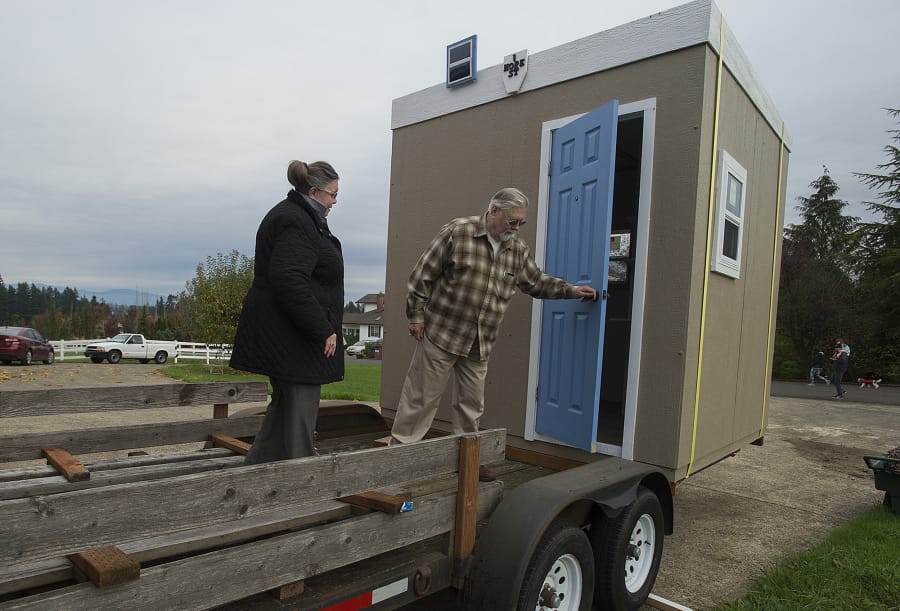Steve Hix couldn’t stay retired for long.
The serial entrepreneur, who is “only 80,” spent a lot of time at his home in Camas watching current events on TV, such as the ongoing Syrian refugee crisis. There were stories about people making their way across the Mediterranean Sea, the shocking photo of a 2-year-old Syrian boy whose body washed ashore — and the refugee camps where those fleeing the country’s civil strife stayed.
His wife, Jeannie Hix, 75, said some of the camps were deplorable-looking.
“We thought there must be a better way to live in these refugee camps,” she said.
From there, Dwellings of Hope was born. Steve Hix came up with the idea for a shelter kit, one that would be easy to ship and assemble.
Having started eight businesses over the course of his career, he knows that people like to see a real-life example, not just blueprints or a 3D model. So, he built a prototype in his friends’ shop in Camas. It’s an 8-by 8-foot shelter put together using a bolting system. He’s since moved operations to his friends’ barn in the Fairgrounds neighborhood, where he plans to build a bigger unit.
“The key is, you can take it apart, stack it up and use it again,” Hix said. “You can take one of these in a small trailer or pickup truck and set it up in a matter of hours.”
The shelter features a bunk bed that can fold into a sofa, a solar cell that can power two lights and a cellphone, a sink that draws water from a 5-gallon jug and drains into a gray water container, a portable toilet and a couple of small windows. It’s essentially a dry cabin. The walls are made of easy-to-clean melamine, and it’s fully insulated. Hix said the kit cost about $7,000.
For the last several months, he’s showed the shelter to different groups and people. It was also on display at Habitus, the interactive Ann Hamilton art installation that was in Centennial Mills Pavilion in Portland.
Hix said he’s talked with the U.S. Department of Housing and Urban Development and the United Nations to figure out potential applications, such as sending them to disaster areas. Vancouver Mayor Anne McEnerny-Ogle was among those who toured it over the summer.
“Steve’s project is timely, unfortunately,” she said. “There are all sorts of different ways to use these.”
She envisions people building these kits in an assembly line and sending them wherever they need to go, whether that’s overseas or to families who have lost their homes in Paradise, Calif., or to homeless households here in Vancouver. The prototype reminds her of the prefabricated homes that were built in the Vancouver Heights neighborhood for World War II.
Hix said the units are modular, so they can be attached to one another to create larger shelters or complexes. After he builds a bigger prototype, he plans to videotape the process showing how to take it apart and put it back together, as well as doing more marketing to drum up interest in his Dwellings of Hope.




